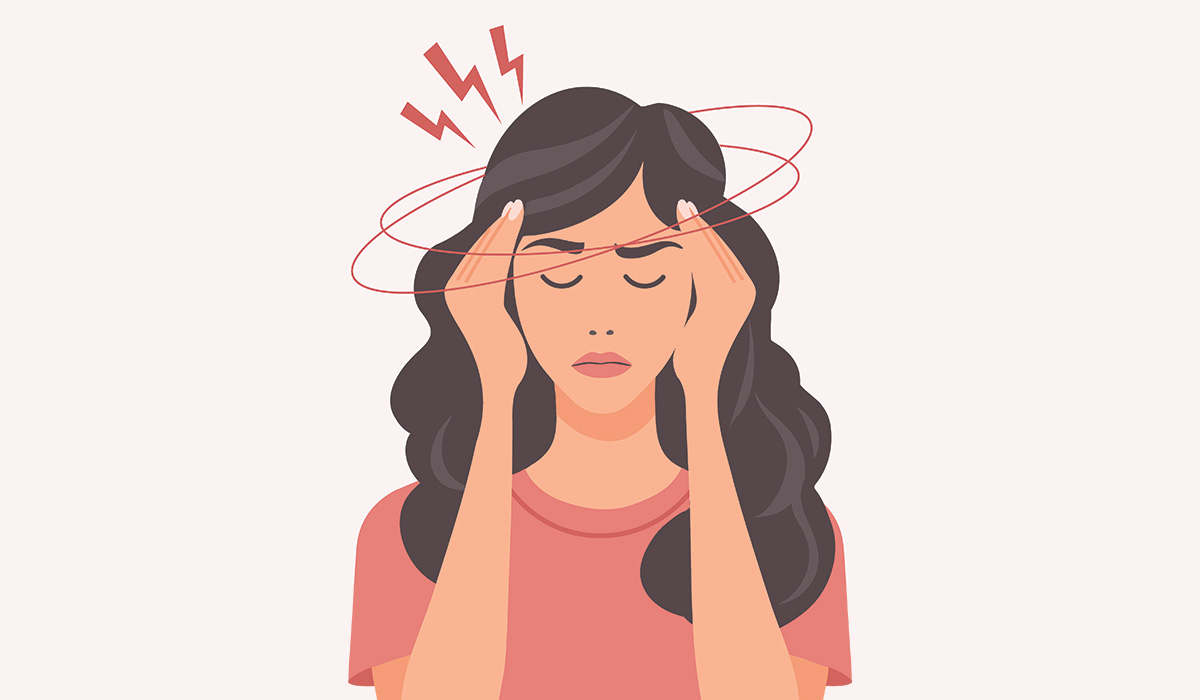
who experience it most commonly. Ocular migraine is usually mild and short-lived, but after severe attacks, some symptoms may persist longer and require specialist treatment.
Types
Ocular migraines can be divided into two types. One is retinal migraine, whose name indicates a specific location possibly related to visual symptoms. It causes visual disturbances in only one eye, which may persist for a long time. The second type is migraine with aura. In this case, visual problems affect both eyes and usually last for a short time. However, other symptoms such as speech difficulties or motor coordination problems often occur as well.
Causes
Ocular migraines are likely related to improper blood flow. In the case of retinal migraine, symptoms result from vasoconstriction in the retina or ciliary vessels. Migraine with aura, on the other hand, may be associated with neuronal disturbances in the brain that trigger a wave of electrical activity. As the wave spreads through the cerebral cortex, it disrupts blood circulation in the brain, which leads to visual issues and additional symptoms.
Various factors can contribute to abnormal blood flow. These are known as triggers and include stress, smoking, hormonal changes, dehydration, high blood pressure, intense physical exercise (especially bending over), being at high altitude, or excessive heat. Furthermore, certain foods or medications can trigger ocular migraine, with products containing caffeine or alcohol being particularly dangerous. The condition can also have a genetic basis, so some patients are more prone to ocular migraine.
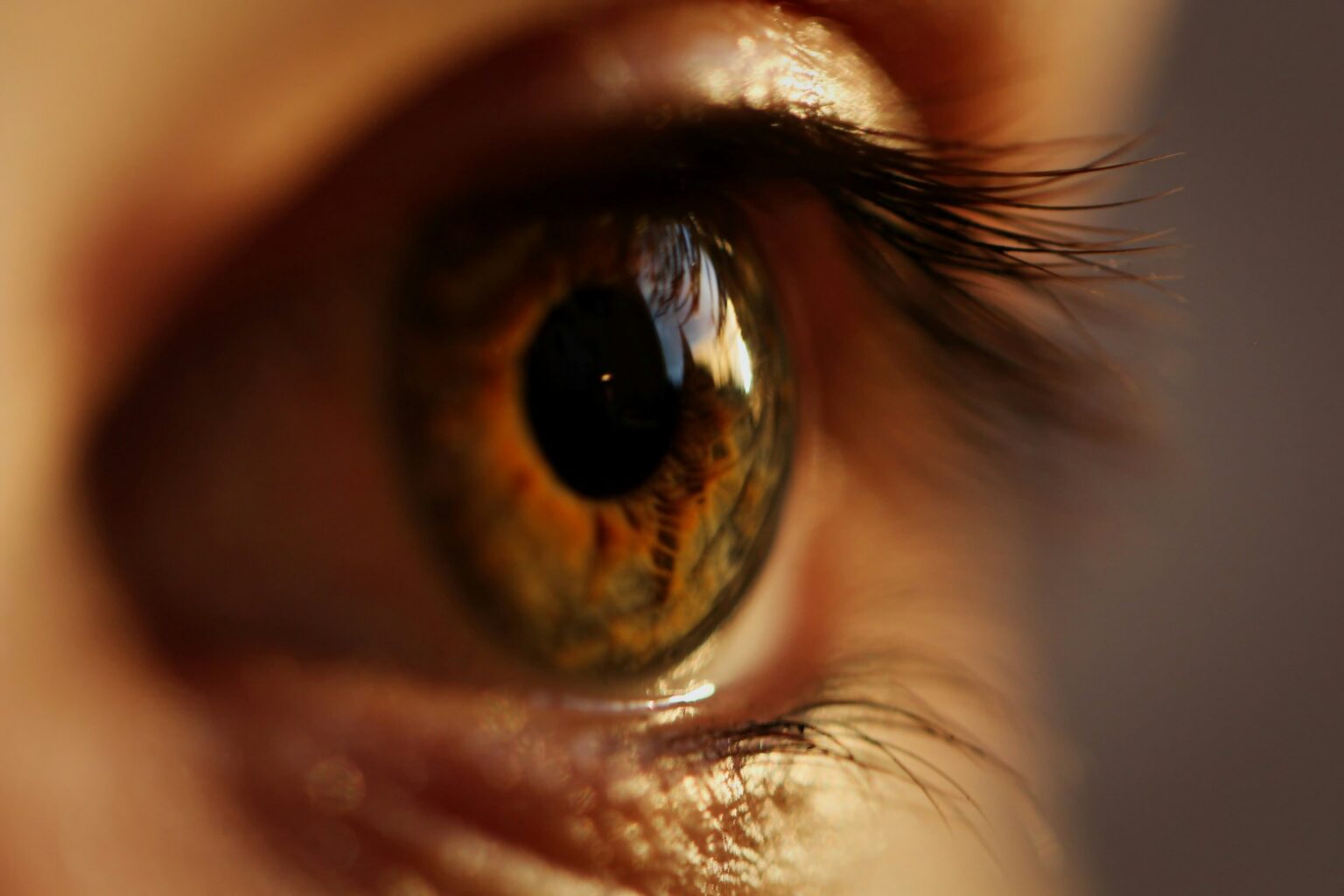
Symptoms
Retinal migraine affects only one eye, so visual disturbances are unilateral. The symptoms are usually more severe than in the case of migraine with aura. Recurrent, short-lived episodes of scotoma or flashes of light occur, which can lead to partial or complete temporary loss of vision in the affected eye. Visual disturbances may occur both before and during a headache attack.
However, retinal migraine is not always accompanied by pain. In some people, visual symptoms occur without pain or only with a feeling of discomfort behind the eye. Moreover, other symptoms may occur, such as malaise, sensitivity to light, nausea, or vomiting.
In migraine with aura, visual disturbances occur in both eyes because the wave of activity in the brain that causes the aura involves areas responsible for processing visual stimuli. Symptoms usually last about five minutes, but can persist for up to an hour. Patients describe them in different ways. Some see wavy lines, dots, or geometric patterns, while others report flashing lights, bright spots, blind spots, or general blurred vision. Some people even experience a temporary complete loss of vision in both eyes.
These symptoms are usually preceded by a severe headache, although sometimes the pain occurs simultaneously with the aura or does not occur at all.
When the wave of activity also affects other areas of the brain, additional symptoms may occur, such as tingling, numbness or muscle weakness, dizziness, and balance problems. Some patients also experience difficulty speaking, tinnitus, or insomnia.
Due to the nature of the symptoms, retinal migraine and migraine with aura can easily be confused with other eye diseases, so a medical consultation is necessary to make a correct diagnosis. A quick response is particularly important because, in extreme cases, retinal migraine can lead to permanent vision loss.

Diagnosis
When a patient experiences an ocular migraine attack during a visit, the doctor can quickly make a diagnosis. They then use an ophthalmoscope, a device that allows them to view the retina and assess blood flow in the eye’s vessels. During an attack, blood flow is weaker, which clearly indicates an ocular migraine.
The problem is that attacks are usually temporary and rarely occur in the doctor’s office. In such situations, the doctor relies mainly on a detailed interview. They pay attention to whether the symptoms developed gradually, lasted from 5 minutes to an hour, and whether they were accompanied by a headache or appeared immediately after. If these elements match, ocular migraine may be suspected.
However, the doctor must confirm that another condition isn’t causing similar symptoms. Therefore, they often refer the patient to an ophthalmologist to check that their eyes are functioning properly and to rule out more serious diseases.
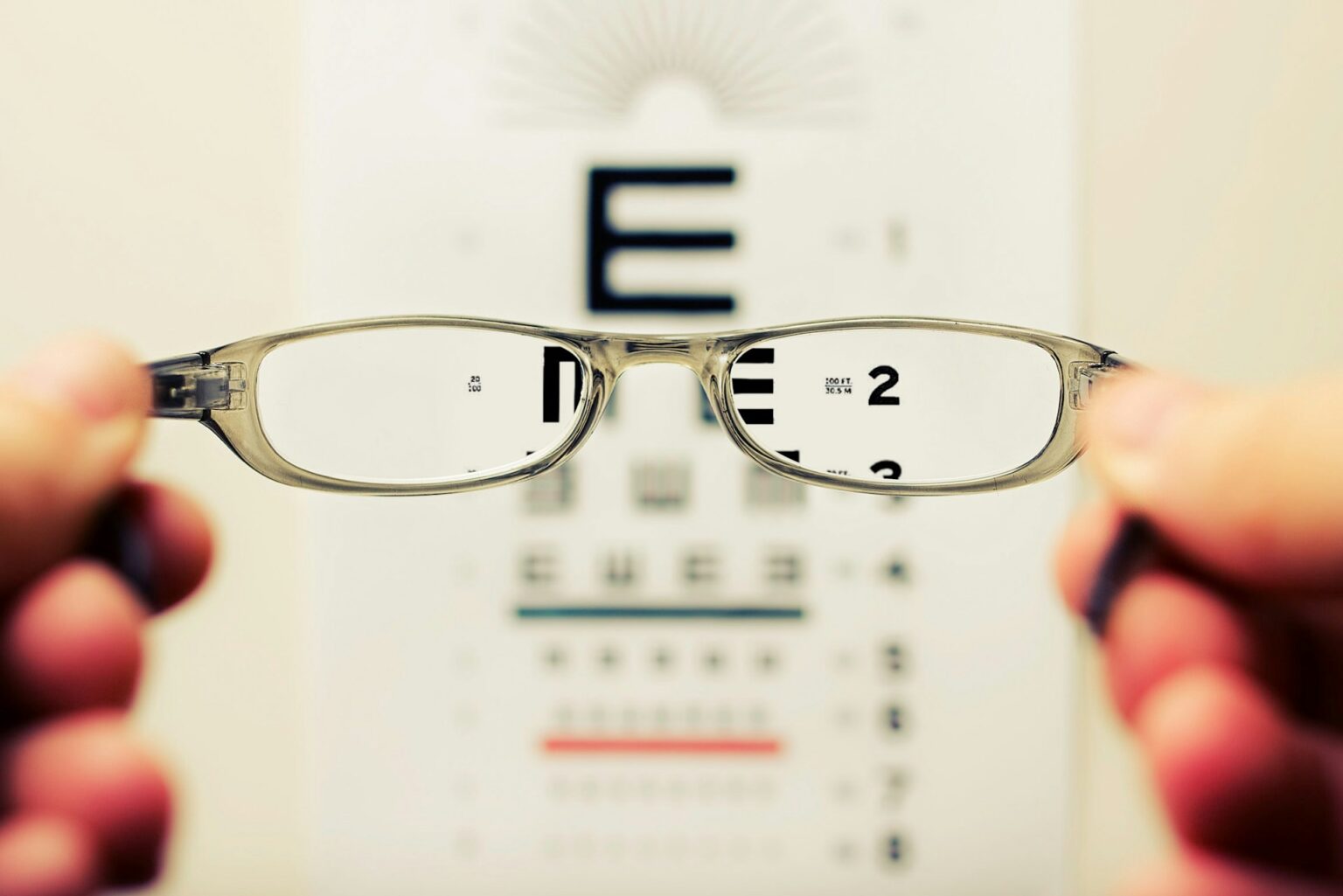
Treatment
Treatment for ocular migraine is mainly necessary when attacks occur frequently. In most cases, the symptoms disappear spontaneously and do not return. However, if the symptoms persist or recur, your doctor may recommend medication and lifestyle changes. In such situations, the main goal is to reduce the number of attacks and alleviate their severity.
Lifestyle Changes
Patients can reduce the number of migraine attacks by avoiding the factors that trigger them. However, each person reacts differently, so it is necessary to determine for yourself what exacerbates your symptoms. It is a good idea to keep a journal and use trial and error to observe what precedes the attacks. Triggers can include certain foods, drinks, physical activity, or even lack of sleep, so in many cases, a change in lifestyle is necessary.
Reducing alcohol and caffeine intake and giving up smoking altogether can bring great relief. Strong, bright light also bothers some people, so they should wear sunglasses and limit their screen time. It also helps to avoid overheating, stay hydrated, and use relaxation techniques to reduce stress levels. Your doctor can suggest the best strategies for dealing with attacks.
Pharmacotherapy
If changing various habits is not enough and ocular migraines continue to recur, your doctor may prescribe various medications. Anticonvulsants and regular aspirin are helpful in reducing the frequency of attacks. Patients can also relieve symptoms by using painkillers or antiemetics. When treating retinal migraines, clinicians skip beta-blockers because they might trigger vision loss. Calcium channel blockers are safer as they may relax blood vessels and therefore reduce the vasoconstriction in the brain associated with migraines.

Complications
Although ocular migraines usually go away on their own, it is better not to underestimate the symptoms. In addition to headache and visual disturbances, it can cause temporary vision loss, which, if not treated properly, can lead to permanent damage. When sensory problems that impair vision occur, it is best to consult a doctor as soon as possible. Early intervention and avoiding individual triggers can prevent further attacks and protect your eyesight.
Sources
- Yasir Al Khalili, Sameer Jain, Kevin C. King (2023). Retinal Migraine Headache. https://www.ncbi.nlm.nih.gov/books/NBK507725/
- Nidhi Shankar Kikkeri, Shivaraj Nagalli (2024). Migraine With Aura. https://www.ncbi.nlm.nih.gov/books/NBK554611/
- Bradley A. Nordin (2025). Differentiating Visual Symptoms in Retinal Migraine and Migraine With Aura: A Systematic Review of Shared Features, Distinctions, and Clinical Implications. https://pubmed.ncbi.nlm.nih.gov/40873917/
- Ruchi Shukla, Ashutosh K. Mishra, Mukesh Shukla, Archana Verma, Pragati Garg, Suyash Singh, Rajwinder Kaur, Nilakshi Banerjee (2024). Clinical Characteristics of Migraine and Their Association With the Retinal Nerve Fiber Layer Thickness. https://pmc.ncbi.nlm.nih.gov/articles/PMC11193330/
- Yu Jeat Chong, Susan P. Mollan, Abison Logeswaran, Alexandra B. Sinclair, Benjamin R. Wakerley (2021). Current Perspective on Retinal Migraine. https://pmc.ncbi.nlm.nih.gov/articles/PMC8396291/
- Turgay Dalkara, Ala Nozari, Michael A Moskowitz (2010). Migraine aura pathophysiology: the role of blood vessels and microembolisation. https://pmc.ncbi.nlm.nih.gov/articles/PMC2921876/

Biotin: What Is, Uses, Biotin Deficiency, and Dosing
Sarcoidosis: What Is, Symptoms, Diagnosis, and Treatment

Intermittent Fasting: What Is, and What Can You Eat
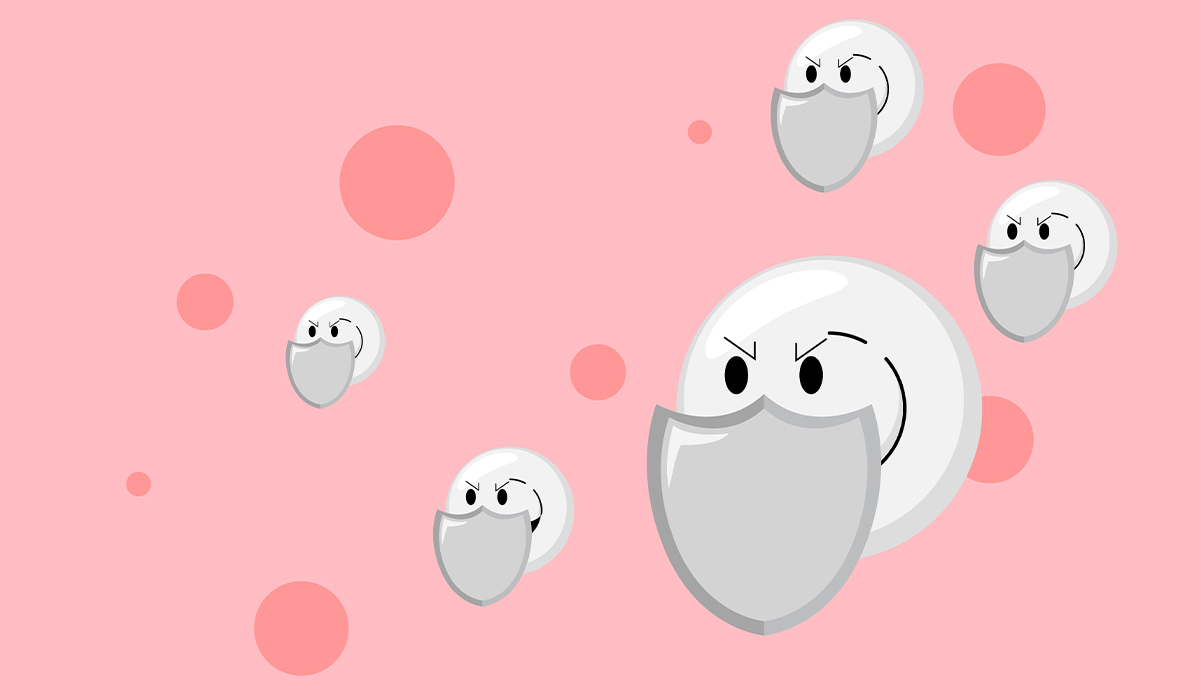
White Blood Cells: What Are, Types, Function, and Testing
Oral Thrush: What Is, Signs, Diagnosis, and Prognosis
Eosinophils: What Are, Anatomy, Functions, and Conditions
ALS

Osteoporosis
Abscess Tooth: What Is, Causes, Diagnosis, and Treatment
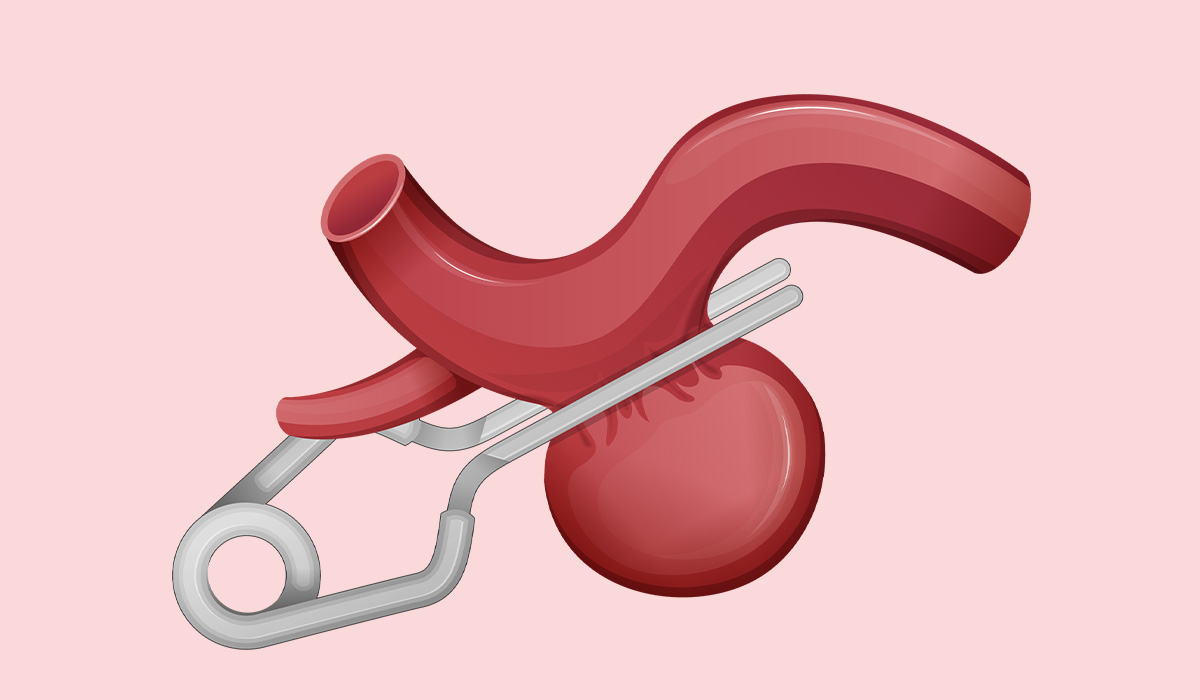
Aneurysm: What Is, Signs, Diagnosis, and Treatment
Squamous Cell Carcinoma: What Is, Symptoms, and Treatment

Vitamin A: What Is, Roles, Deficiency, and Excess

ADHD

Angina: What Is, Causes, Symptoms, and Diagnosis
Edema: What Is, Causes, Diagnosis, and Treatment
